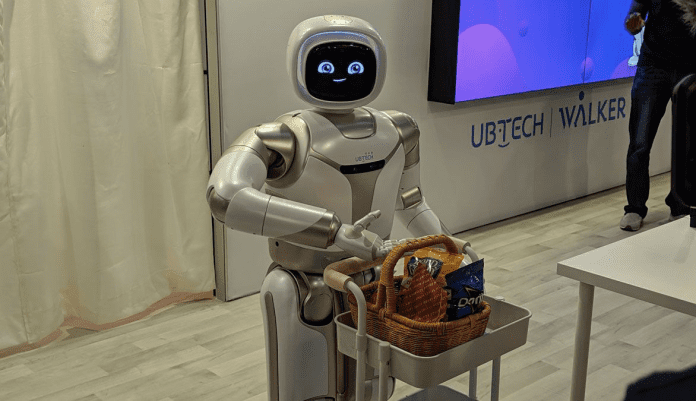A Look at the Robots Available Today and A Glimpse of the Robots of Tomorrow
Today’s market features an impressive variety of robots that are ready to help people with errands around the house, perform tasks in the workplace, and assist students in the classroom.
In addition to home robots that can clean your house, there are educational robots that can help students with their homework and teach valuable learning skills. There are also pet, companion, and assistant robots made to entertain and to provide companionship.
Even more remarkably, some innovative companies are developing hi-tech robots that will assist doctors and patients in hospitals, work with astronauts in space, and fight as soldiers on the battlefield!
It seems all but inevitable that in the near future, anyone will be able purchase an inexpensive robot as their very own personal assistant. We thought it would be fun to take a look at some of the most remarkable robots available today, and to take a peek at some of the robots of tomorrow.
PERSONAL ROBOTS
Caption: Ubtech Robotics Walker
Walker is a biped robot (walks on two feet) designed to deliver a home butler service and help with day-to-day operations in the home and workplace. Its capabilities include climbing stairs, serving drinks, and hanging up your clothes. Walker can also help with video calls and conferencing, and can serve as your own personal security patrol.
Aeolus
Aeolus is a general-purpose consumer robot designed to assist around the house with daily chores. It is capable of picking up clutter around the house, delivering food, and finding lost objects. Aeolus also boasts Artificial Intelligence that helps it to learn about your life, your routine, and the layout of your home, so it can serve you even better.
NURSING CARE ROBOTS
Robots now have a variety of uses in healthcare, helping humans extend beyond what we can naturally and safely do ourselves. The use of these types of robots continues to develop rapidly in surgery and other areas of medicine, enabling health care providers to focus on engaging with and caring for patients.
Robots in operating rooms and clinics are already becoming the norm, marking just one of many ways healthcare continues to push the boundaries of technology.
Robear
Robear is a high-tech nursing care robot. It can of perform tasks such as lifting a patient from a bed into a wheelchair, and helping a patient who needs assistance to stand up. As its name suggests, Robear resembles a teddy bear.
Romeo
Romeo is a humanoid-sized robot that is designed and built to assist the elderly. It is able to open doors, to climb stairs and to reach for objects. In the future, this clever bot may enable the elderly to continue living independently in their own homes rather than being forced into moving to assisted living.
INDUSTRIAL ROBOTS
Robots in Restaurants
Many restaurant owners anticipate robots becoming mainstream in the very near future, performing tasks such as cleaning, food service, preparation, and hosting.
Nao
Tokyo-Mitsubishi UFJ is Japan’s largest bank, and it employs robots. Nao is a bipedal android that speaks over 20 languages. It assists customers with opening accounts, money transfers, and ATM transactions. Nao provides services and tasks that human employees cannot, such as 24-hour service in multiple languages.
ROBOTIC PETS
Some conditions make it difficult, or impossible, for people to care for their pets. That’s where robotic animals come in. Robot pets are toys designed to imitate the characteristics, mannerisms, and appearance of real-life pets. Robot dogs and cats have become increasingly popular due to their ability to provide a quality substitute for people who are otherwise unable to care for a live animal.
Robotic Dog
Robotic Kitten
FUTURISTIC ROBOTS
SPACE ROBOTICS
Russia is developing a humanoid robot that will go into space by 2025. Roscosmos, a state corporation of the Russian Federation responsible for space flights and aerospace research, has presented a prototype of a humanlike robot of a new generation called “Teledroid.”
Its main purpose is to check the dimensions for placement of the ship during transportation to the International Space Station (ISS). Ergonomic studies will be conducted on the robot when performing joint operations with astronauts.
The robot will protect the station crew members and free up human forces to perform other tasks. The main responsibilities assigned to such robots will be solving problems on the surface of cosmic bodies: the moon, planets of the Solar System, and their satellites.
COMBAT ROBOTS
The U.S. military will have more robot soldiers on the battlefield than human ones by 2025, suggesting that deadly combat robots are rapidly becoming a reality of modern-day warfare.
The United States government has invested a great deal in researching and developing combat robotics systems, seeking to have a military edge over other countries such as China and Russia in the next 10-15 years, the United States has invested a great deal in researching and developing combat robotics systems.



